- Technology sector dip-buying expected
- Travel sector leads Europe higher
- Bitcoin recovery continues...for now
Key Events
On Wednesday, with traders readying themselves for the US Federal Reserve announcement during the US session, futures on the Dow Jones, S&P 500, NASDAQ and Russell 2000 point to a significant recovery when markets open in New York. European indices were also trading in the green.
As well, oil rallied ahead of today's EIA inventory data.
Global Financial Affairs
The recent market downturn and increased volatility have attracted dip buyers. Traders took advantage of cheaper technology stocks, boosting NASDAQ 100 contracts so the tech-heavy futures outperformed other major US contracts.
During most of the pandemic, technology stocks outperformed while also negatively correlating with value shares that rely on an open economy.
In Europe today, the travel sector led the STOXX 600 Index higher.
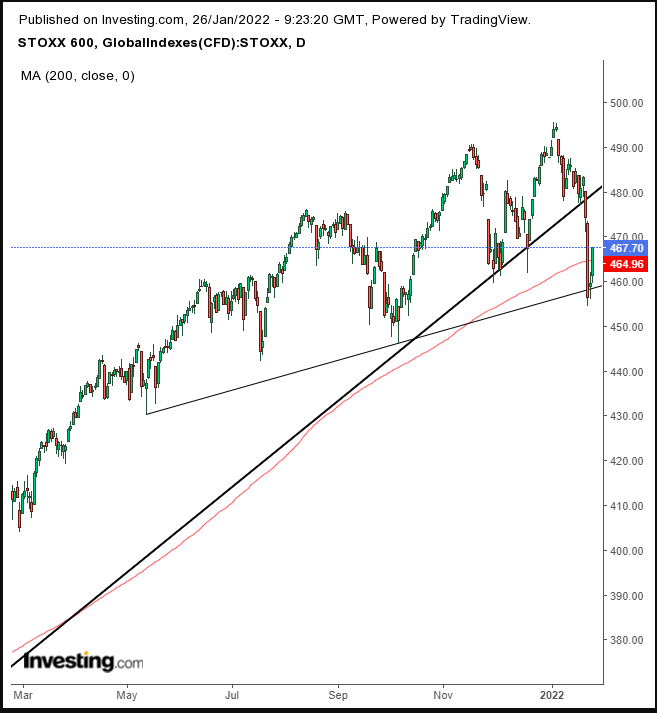
Stocks there rebounded for the second day, supporting a rising trendline since the May 13 low, as well as pushing the price back above the 200 DMA.
The pan-European benchmark's next test will be the broken uptrend since the March 2020 bottom. We will redraw that long-term uptrend line to include the price action of the recent selloff once the gauge registers a peak above the Jan. 4 all-time high.
Earlier, trading in Asia was mixed, with China's Shanghai Composite leading the gainers with a 0.66% rally. Conversely, Japan's Nikkei 225 led declines with a 0.44% slide. Australia's ASX 200 was closed for a holiday after plummeting 2.49% on Tuesday when it finished at an eight-month low.
A volatile US session on Tuesday saw stocks end the day lower. Dip-buying late in the session fizzled in the final hour, as traders sought direction over just how blatantly hawkish the Fed statement will be.
Russia's ongoing threat to invade Ukraine is providing the market with another reason to worry.
Yesterday, technology stocks continued to lead the selloff since higher interest rates dent expectations for continued capital appreciation of growth stocks. Therefore, with a 2.48% loss, the NASDAQ 100 underperformed the major averages. On the other side of the spectrum, the mega cap Dow Jones saw a negligible 0.19% retreat.
Accordingly, most of the S&P 500's 1.22% decline was attributed to its worst performers: the Technology sector which dropped 2.31% and Communication Services which fell 2.05%. The only two sectors in the green on Tuesday were cyclical Energy which blasted higher with a 3.88% jump and a more tempered 0.42% rise by Financials.
The S&P 500 fell about 3% in the early portion of the session, attracting bargain hunters. Still, unlike Monday's comeback, which turned from severe declines into gains, yesterday's slump did not provide enough of a discount for bargain hungers so the index closed in negative territory.
To recap: on Monday, the S&P dropped nearly 5% intraday, and on Tuesday, it fell almost 3% during the session. According to Bloomberg, there have never been two consecutive sessions when the index has slipped at least 2% from the previous day's close to finish higher, going back to the early 1980s.
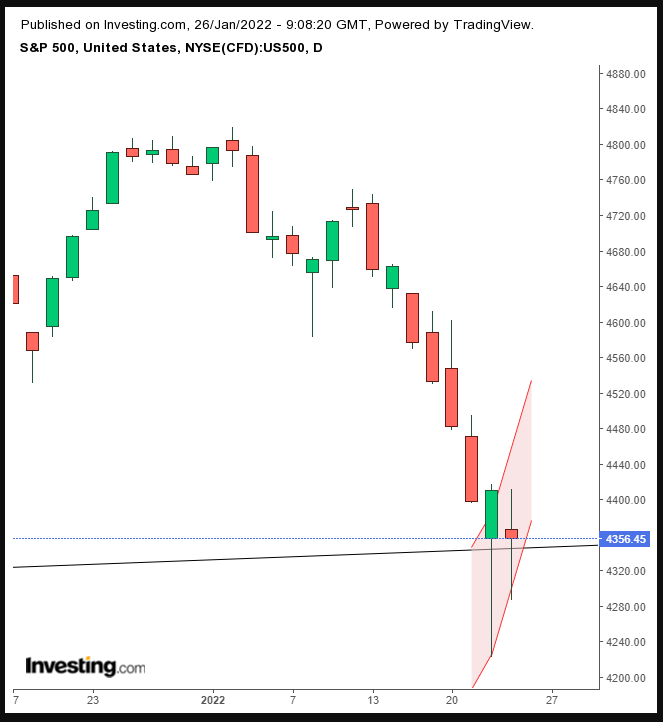
Monday's dramatic rebound and Tuesday's High Wave candle precisely on a trendline since July 19 demonstrate that the gauge is on a knife's edge. The last two sessions form a rising flag on the hourly chart, bearish upon a downside breakdown, which could be made significant considering the trendline mentioned earlier.
The VIX ended a six-day acceleration.

The drop suggests easing concerns, but a more comprehensive view demonstrates a pattern in which each new high since June has increased volatility overall.
Yields on the 10-year Treasury note, which led to the recent equity selloff, edged higher.
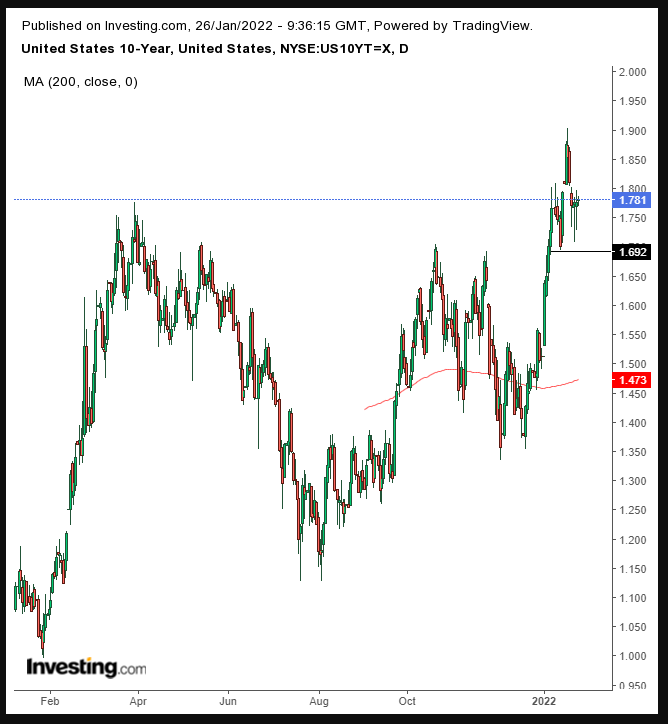
Rates could be forming a small H&S top, as they struggle with the late-March peak.
The dollar climbed for the third day.
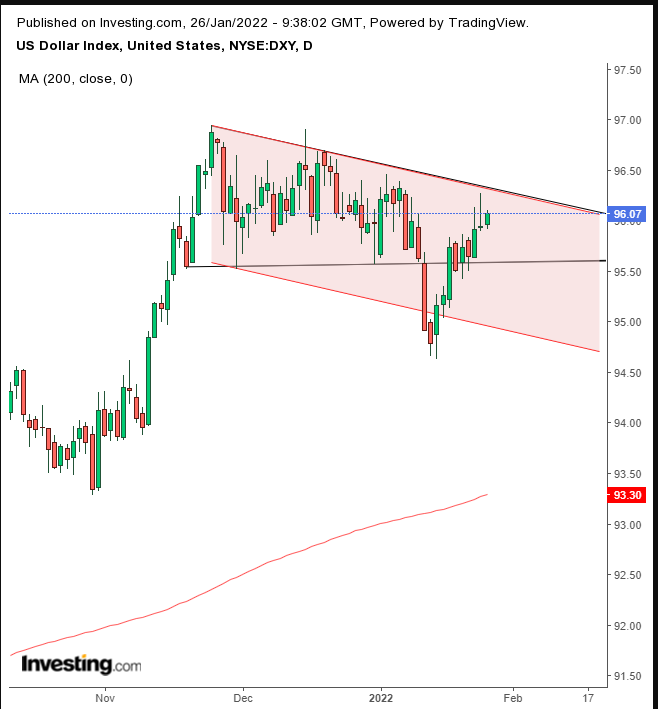
As the previous two days closed well off their intraday highs, the greenback is nearing the top of a range.
Gold retreated from a two-day gain.
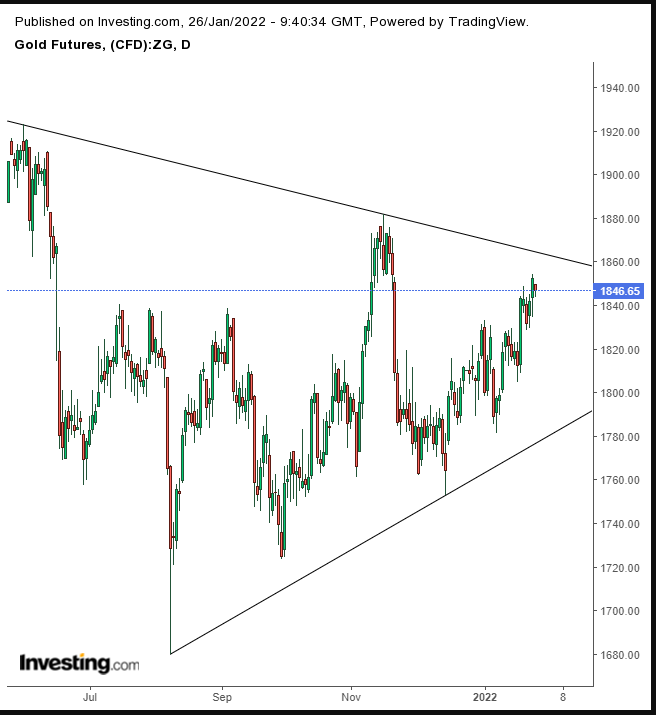
Traders may be approaching a direction decision as the price trades toward the apex of a triangle.
Bitcoin extended a rebound to its fourth day. However, we don't consider it a positive signal.
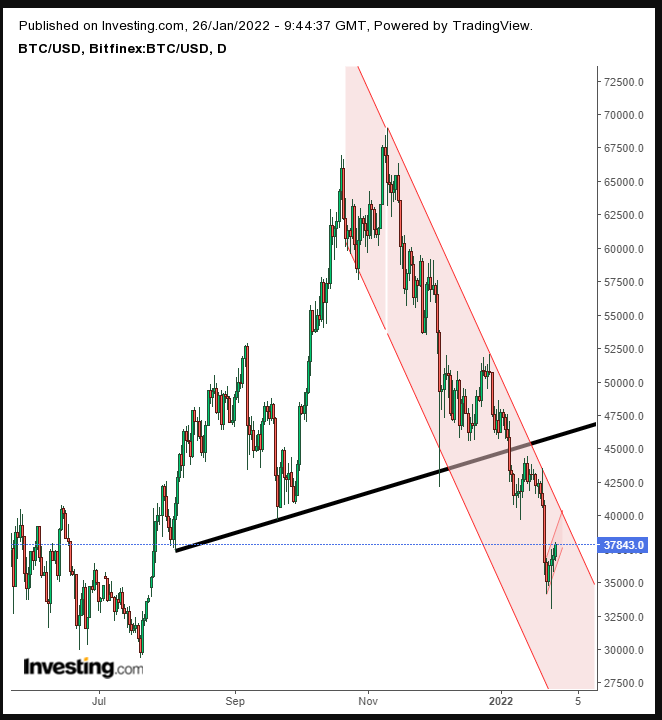
We predict a continued downtrend, as the current range is most probably developing a rising channel—a period for short-covering after a windfall—before the cryptocurrency trades along its down-channel which helped it complete a sizeable H&S top.
If the $29,000 level is broken, which the H&S implies it will be, BTC will keep falling.
Oil climbed for the second day, to above $86, on estimates of another drop in US stockpiles which will be announced at 10.30 AM EST.
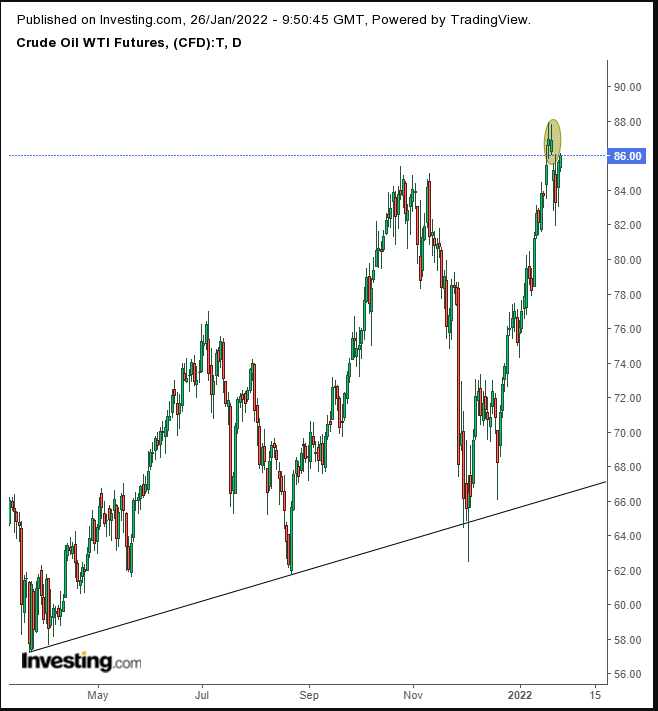
The WTI chart is tricky. On the one hand, both peaks and troughs are rising, but troughs are falling dangerously near previous lows, suggesting weakening demand. Also, the current rise must make a new high to undo the bearish sentiment of the island reversal. The island reversal—which is a short-term bearish pattern—was created when the price opened higher on Jan. 19, forming a rising gap, only to open lower on Jan. 21 which created a falling gap.
Up Ahead
- US initial jobless claims are released on Thursday.
- GDP figures for the US are published on Thursday.
- On Friday the University of Michigan consumer sentiment survey is released.
Market Moves
Stocks
- The STOXX 600 rose 1.3%
- Futures on the S&P 500 rose 0.8%
- Futures on the NASDAQ 100 rose 1.1%
- Futures on the Dow Jones Industrial Average rose 0.7%
- The MSCI Asia Pacific Index fell 0.1%
- The MSCI Emerging Markets Index rose 0.1%
Currencies
- The Dollar Index was little changed
- The euro fell 0.16% at $1.1280
- The Japanese yen rose 0.27% to 114.17 per dollar
- The offshore yuan was little changed at 6.3281 per dollar
- The British pound rose 0.16% to $1.3518
Bonds
- The yield on 10-year Treasuries was little changed at 1.77%
- Germany's 10-year yield was little changed at -0.07%
- Britain's 10-year yield advanced one basis point to 1.18%
Commodities
- WTI crude advanced 0.56% to $86.08 a barrel
- Brent crude rose 0.69% to $87.79 a barrel
- Spot gold fell 0.2% to $1,844.65 an ounce
